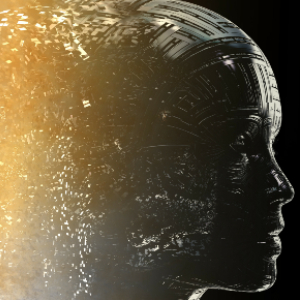
Artificial Intelligence (AI) is the most talked-about technology currently and for obvious reasons. However, in the face of many facts about this technology, there have been several myths. For example, many associate it with Terminator-like scenes where machines take over the world, among other myths. In this article, we will be discussing and debunking some of the most popular myths about Artifical Intelligence.
1. AI will take human jobs.
As stated in several essay writer service, this is the most popular myth about AI. According to the proponents, AI will become so cheap and advanced that companies will no longer hire human labor because they’re deemed expensive and inefficient. This will end up in mass unemployment with the technology taking up humans’ jobs and executing it with faster speed and lower cost. There are many reasons why this can’t happen. Many jobs require cognitive abilities to accomplish tasks that humans have better than AI. Although some low-level jobs are at risk, most of the working populace will benefit from using AI to execute some of their tasks. So, it is more of a tool augmenting existing jobs, but with the possibility to replace a few low-level jobs.
2. AI is made of androids and intelligent robots looking like humans.
This is a myth that originated from a fictional movie. While there are several general confusions between AI and robotics, they are two different fields of science, serving other purposes. In differentiating both, an essay writer at paper writing service review states that artificial intelligence is software programmed to make it autonomous, taking its decisions and learning from past mistakes. In contrast, a robot is a physical device served by sensors and actuators to complete several tasks. However, some robots may be enhanced using artificial intelligence algorithms.
3. AI can develop by itself without human knowledge.
This is another movie concept in which AI suddenly develops to the point that humans can’t control or stop it, becoming rogue. AI researchers commit themselves to create this technology to learn from its data and its result. Progress with this has resulted in unsupervised machine learning, but it is still a long way off. Otherwise, AI can’t develop sentience and consciousness to rebel against humans. These algorithms can’t grow beyond their code because they’re just intelligent programs solving complex problems with intelligent programs. If an accurate AI is created, then there’s a high, slight possibility of this happening. However, given the several forward-thinking regulatory practices, this is an unlikely scenario, whether sooner or later.
4. There’s no difference between AI, deep learning, and machine learning.
While all three are parts of a whole AI system, they’re very different. According to assignment help, machine learning refers to how AI learns through external sources such as determining data using algorithms and determining the correct behavior. On the other hand, deep learning depends on neural networks and tells the AI the probability of making the right decisions. It is one of the techniques used in the practical application of machine learning.
5. AI makes better employees than humans.
While AI may displace some low-level jobs, it is not a better employee than humans. It is best for handling repetitive and simple tasks to save time. In some instances, it may be more efficient and cheaper than humans. However, it can barely replace humans in many areas, especially with the need for critical thinking, empathy, creativity, etc., at work.
6. AI will learn to work like human brains.
This is impossible because AI algorithms are nothing more than algorithms. They are a complex command set that the computer follows and cannot function like human brains in any way. There are modern advancements in AI, like neural networks deriving their inspirations from the architecture and mold of the human brain. However, they lack the capacity and ability to think like humans. Computer programs can’t replicate the many cognitive processes of the human brain; at least current AI technology lacks that capability.
7. Future deep-learning operations require power that is unsustainable.
Several best essay writing from a dissertation service states that AI needs considerable additional computing power to train and perform complex deep-learning operations. If most organizations adopt AI, it is believed that this will become a massive problem because it will be unsustainable. However, we are more likely to find the solution to climate change with AI with its usage across many sectors. In addition, before it becomes widely adopted, there will be more powerful computers to support it.
8. You can’t train AI without a large amount of data.
This isn’t necessarily true. You need lots of computing power and data to train artificial intelligence from scratch. While you need terabytes-worth of data to teach AI to do complex tasks like driving a car, it is flexible enough to be retrained in specific areas depending on what field you are applying the technology to. There’s a basic data framework from the general data set, and just the last part needs to be replaced depending on the use case.
Conclusion
There are many positive reasons to talk about AI, and with technology as a whole. And within those, there are facts and the myths. Many people mistaken myths as fact, and this has created some skepticism about the technology. It is important that these myths are debunked and the truth is put out.
